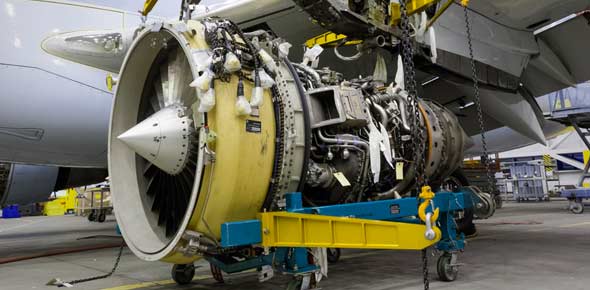A fire extinguisher's pressure is within a safe operating range when...
The responsibility for FOD prevention belongs to
When is it permissible to reuse cotter pins?
The responsibility for initiating a lost tool report belongs to the
Radiation hazards are affected by
Normally, the safe distance behind an operating jet engine exhaust is
Responsibility for maintaining the Air Force Technical Order 781-...
The symbol entered on the forms if an aircraft exceeds the PDM cyle by...
The most common excuse for taking short cuts is
The prime contributors to dropped objects are
The condition most likely to cause aircraft damage is
The first step taken when reviewing an Air Force Technical Order...
The estimated percent of accidents caused by nature is
The safety training phase described as an effective tool that creates...
Hazardous Waste Management System rules are published by
The type of technical order library that does not need to maintain its...
Alluminum alloy washers are used with steel bolts on aluminum alloy...
The correct way to detect broken wires on a cable is to
The responsibility for ensuring good supply discipline is practiced...
The symptom that is not a sign of noise fatigue is
The MB-4 tractor incorporates
Special bolts are identified by
Aircraft cable size is determined by its
When measuring resistance on a Fluke multimeter, the letters OL...
The frequency of cleaning an aircraft exterior depends, for the most...
The type of maintenance that ensures equipment is ready and available...
In most units, the responsibility for investigatin dropped objects...
The lowest person authorized to clear a red X when a lost tool cannot...
The noise intensity of a jet engine is greatest toward the rear at a
Under ideal conditions, an aircraft is said to be operationally ready...
A major drawback of using pneumatic lifting bags is
The FL-1D floodlight consists of two
To tighten cannon plugs, do not use
The inspection usually performed just prior to takeoff and that may...
In order of increasing capability, the Air Force's varying degrees of...
The solution used to treat areas affected with electrolyte from a...
Prior to using a torque wrench, cycle the torque wrench through the...
The method that cannot be used to search for lost tools is
The unit capable of providing AC and DC electrical power, in addition...
When securing widely spaced bolts by the double-twist safetying...
Aircraft oxygen servicing or draining is prohibited within how many...
During desert operations, lubrication should be done
The method of aircraft hoisting confined to emergencies when no other...
The directional flow of the schematics in the troubleshooting manual...
The maintenance stand that is a scissor-type is the
The number of threads that must be showing through a self-locking nut...
Corrosion or deterioration of a metal part continues until the part is
Galvanic corrosion occurs when
The nondirective publication that may cite forms and provide guidance...
The lifting of an aircraft jack is called a
Temporary storage of hazardous materials at a central accumulation...
Inspection workcards are known as
The first step in developing an effective FOD prevention program is to
A push-pull rod end engagement is checked
When the H symbol is shown on the Fluke mulitmeter display, the
As fireguard, position yourself even with the
The GAS is normally sent out
The two maintenance stands on which C-1 maintenance stand can be...
The total number of Air Force TO catalogs is
The type of TO improvement issued for all TCTO deficiencies is
The information that the configuration management subsystem ensures is...
The Air Force Technical order Form 781K is used to document
The IMDS subsystem that provides information about jobs performed by...
A 7 x 19 cable has
The AF IMT 2691 is used to
If no maximum wind velocity is specified in the aircraft technical...
The temperature range the C-10 air conditioner is capable of...
The DD forms easily identified by their green margins and letters are...
The type of cleaners not very effective on grease, but excellect for...
The F-2 lifting bag is designed to lift
The bolt used where heavy tension or lengthwise stress must be...
The number of positons on the function switch of the AN/PSM-37...
If an aircraft is idle for more than 30 or 90 days, the inspection...
To measure current flow, you connect an An/PSM-37 multimeter in
Shop stock should not normally exceed
The expandabiltiy, recoverability, repirability code that designates a...
The maintenance stand that has an adjustable height of 13'- 20' is the
The maximum BTUs per hour output of the H-1 heater is
The optimum temperature to cool sealants mixed in an automatic mixing...
When using 0.032-gage safety wire, there should be how many turns per...
The type of inspection that ensures the completeness of historical...
Due to their potential for harm, commanders are required to ensure...
The IMDS is the production-oriented, automated maintenance management...
Consumable items are identified by the expandability, recoverability,...
Engines overhauled by depot are covered against defects in workmanship...
The Air Force Technical Order Form 781 must be removed from the forms...
The BPO is performed to
In the second grouping of a TO number, the alpha character in...
A list of training courses available for an AFSC can be found in the
On a standard elecrical connector, the key and keyway are located
Tasks that a person is expected to perform in a duty position or WC...
The new generation heater oil burner and combustion blower are powered...
A hose may bear a colored indicator stripe to show
The action necessary to clear an erroneous red X symbol is
The MK-3A-1 is driven by a(n)
The deficiency report (DR) category that results in a work line...
Individuals not directly involved in nitrogen servicing should be...
The low and high pressure capabilites, in psig, of the NSU-L75...
The MC-2A air compressor is capale of delivering air at a maximum...
The usable pressure range, measured in psi, of the MC-1A air...

















